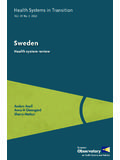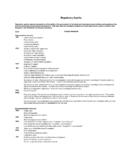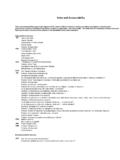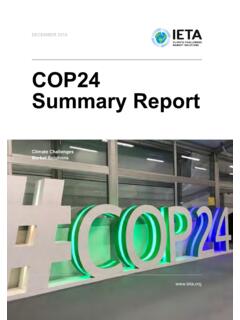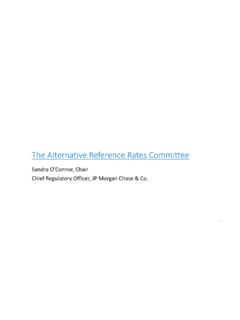Transcription of Health systems in transition, Denmark: health system ...
1 Health systems in transition Vol. 14 No. 2 2012. denmark Health system review Maria Olejaz Annegrete Juul Nielsen Andreas Rudkj bing Hans Okkels Birk Allan Krasnik Cristina Hern ndez-Quevedo Cristina Hern ndez-Quevedo (Editor) and Elias Mossialos (Editor in chief). were responsible for this HiT profile Editorial Board Editor in chief Elias Mossialos, London School of Economics and Political Science, United Kingdom Series editors Reinhard Busse, Berlin University of Technology, Germany Josep Figueras, European Observatory on Health systems and Policies Martin McKee, London School of Hygiene & Tropical Medicine, United Kingdom Richard Saltman, Emory University, United States Editorial team Sara Allin, University of Toronto, Canada Jonathan Cylus, European Observatory on Health systems and Policies Matthew Gaskins, Berlin University of Technology, Germany Cristina Hern ndez-Quevedo, European Observatory on Health systems and Policies Marina Karanikolos, European Observatory on Health systems and Policies Anna Maresso, European Observatory on Health systems and Policies David McDaid.
2 European Observatory on Health systems and Policies Sherry Merkur, European Observatory on Health systems and Policies Philipa Mladovsky, European Observatory on Health systems and Policies Dimitra Panteli, Berlin University of Technology, Germany Bernd Rechel, European Observatory on Health systems and Policies Erica Richardson, European Observatory on Health systems and Policies Anna Sagan, European Observatory on Health systems and Policies Sarah Thomson, European Observatory on Health systems and Policies Ewout van Ginneken, Berlin University of Technology, Germany International advisory board Tit Albreht, Institute of Public Health , Slovenia Carlos Alvarez-Dardet D az, University of Alicante, Spain Rifat Atun, Global Fund, Switzerland Johan Calltorp, Nordic School of Public Health , Sweden Armin Fidler, The World Bank Colleen Flood, University of Toronto, Canada P ter Ga l, Semmelweis University, Hungary Unto H kkinen, Centre for Health Economics at Stakes, Finland William Hsiao, Harvard University, United States Alan Krasnik, University of Copenhagen, denmark Joseph Kutzin, World Health Organization Regional Office for Europe Soonman Kwon, Seoul National University, Republic of Korea John Lavis, McMaster University, Canada Vivien Lin, La Trobe University, Australia Greg Marchildon, University of Regina, Canada Alan Maynard, University of York, United Kingdom Nata Menabde, World Health Organization Regional Office for Europe Ellen Nolte, Rand Corporation, United Kingdom Charles Normand, University of Dublin, Ireland Robin Osborn, The Commonwealth Fund, United States Dominique Polton, National Health Insurance Fund for Salaried Staff (CNAMTS)
3 , France Sophia Schlette, Health Policy Monitor, Germany Igor Sheiman, Higher School of Economics, Russian Federation Peter C. Smith, Imperial College, United Kingdom Wynand van de Ven, Erasmus University, The Netherlands Witold Zatonski, Marie Sklodowska-Curie Memorial Cancer Centre, Poland Health systems in transition Maria Olejaz, Department of Public Health , University of Copenhagen Annegrete Juul Nielsen, Department of Public Health , University of Copenhagen Andreas Rudkj bing, Department of Public Health , University of Copenhagen Hans Okkels Birk, Department of Public Health , University of Copenhagen Allan Krasnik, Department of Public Health , University of Copenhagen Cristina Hern ndez-Quevedo, European Observatory on Health systems and Policies, LSE Health denmark : Health system Review 2012. The European Observatory on Health systems and Policies is a partnership between the World Health Organization Regional Office for Europe, the Governments of Belgium, Finland, Ireland, the Netherlands, Norway, Slovenia, Spain, Sweden and the Veneto Region of Italy, the European Commission, the European Investment Bank, the World Bank, UNCAM (French National Union of Health Insurance Funds), the London School of Economics and Political Science, and the London School of Hygiene & Tropical Medicine.
4 Keywords: DELIVERY OF Health CARE. EVALUATION STUDIES. FINANCING, Health . Health CARE REFORM. Health system PLANS organization and administration denmark . World Health Organization 2012, on behalf of the European Observatory on Health systems and Policies All rights reserved. The European Observatory on Health Observatory on Health systems and Policies or any of systems and Policies welcomes requests for permission its partners concerning the legal status of any country, to reproduce or translate its publications, in part or in full. territory, city or area or of its authorities, or concerning the delimitation of its frontiers or boundaries. Where the Please address requests about the publication to: designation country or area appears in the headings of Publications, tables, it covers countries, territories, cities, or areas. WHO Regional Office for Europe, Dotted lines on maps represent approximate border lines Scherfigsvej 8, for which there may not yet be full agreement.
5 DK-2100 Copenhagen , denmark The mention of specific companies or of certain Alternatively, complete an online request form for manufacturers' products does not imply that they are documentation, Health information, or for permission endorsed or recommended by the European Observatory to quote or translate, on the Regional Office web site on Health systems and Policies in preference to others ( ) of a similar nature that are not mentioned. Errors and omissions excepted, the names of proprietary products The views expressed by authors or editors do not are distinguished by initial capital letters. necessarily represent the decisions or the stated policies of the European Observatory on Health systems and The European Observatory on Health systems and Policies Policies or any of its partners. does not warrant that the information contained in this publication is complete and correct and shall not be liable The designations employed and the presentation of the for any damages incurred as a result of its use.
6 Material in this publication do not imply the expression of any opinion whatsoever on the part of the European Printed and bound in the United Kingdom. Suggested citation: Olejaz M, Juul Nielsen A, Rudkj bing A, Okkels Birk H, Krasnik A, Hern ndez-Quevedo C. denmark : Health system review. Health systems in transition , 2012, 14(2):1 192. ISSN 1817 6 127 Vol. 14 No. 2. Contents Contents Preface v Acknowledgements vii List of abbreviations xi List of tables, figures and boxes xiii Abstract xv Executive summary xvii 1. Introduction 1. Geography and sociodemography 1. Economic context 3. Political context 4. Health status 6. 2. Organization and governance 19. Overview of the Health system 19. Historical background 20. Organization 27. Decentralization and centralization 30. Planning 31. Intersectorality 33. Health information management 34. Regulation 37. Patient empowerment 45.
7 3. Financing 53. Health expenditure 53. Sources of revenue and financial flows 59. Overview of the statutory financing system 61. Out-of-pocket payments 68. VHI 70. iv Health systems in transition denmark Other financing 75. Payment mechanisms 76. 4. Physical and human resources 83. Physical resources 84. Human resources 92. 5. Provision of services 105. Public Health 106. Patient pathways 110. Primary/ambulatory care 113. Inpatient care 118. Emergency care 119. Pharmaceutical care 120. Rehabilitation/intermediate care 123. Long-term care 124. Services for informal carers 126. Palliative care 127. Mental Health care 129. Dental care 135. CAM 136. Health services for specific populations 137. 6. Principal Health reforms 141. Analysis of recent reforms 141. Future developments 150. 7. Assessment of the Health system 155. Stated objectives of the Health system 156. Financial protection and equity in financing 158.
8 User experience and equity of access to Health care 160. Health service outcomes and quality of care 163. Health system efficiency 169. Transparency and accountability 172. 8. Conclusions 175. 9. Appendices 177. References 177. Useful web sites 187. HiT methodology and production process 188. Preface Preface T. he Health systems in transition (HiT) series consists of country-based reviews that provide a detailed description of a Health system and of reform and policy initiatives in progress or under development in a specific country. Each review is produced by country experts in collaboration with the Observatory's staff. In order to facilitate comparisons between countries, reviews are based on a template, which is revised periodically. The template provides detailed guidelines and specific questions, definitions and examples needed to compile a report. HiTs seek to provide relevant information to support policy-makers and analysts in the development of Health systems in Europe.
9 They are building blocks that can be used: to learn in detail about different approaches to the organization, financing and delivery of Health services and the role of the main actors in Health systems ;. to describe the institutional framework, the process, content and implementation of Health care reform programmes;. to highlight challenges and areas that require more in-depth analysis;. to provide a tool for the dissemination of information on Health systems and the exchange of experiences of reform strategies between policy- makers and analysts in different countries; and to assist other researchers in more in-depth comparative Health policy analysis. Compiling the reviews poses a number of methodological problems. In many countries, there is relatively little information available on the Health system and the impact of reforms. Due to the lack of a uniform data source, quantitative data on Health services are based on a number of different sources, including vi Health systems in transition denmark the World Health Organization (WHO) Regional Office for Europe's European Health for All database, data from national statistical offices, Eurostat, the Organisation for Economic Co-operation and Development (OECD) Health Data, data from the International Monetary Fund (IMF), the World Bank's World Development Indicators and any other relevant sources considered useful by the authors.
10 Data collection methods and definitions sometimes vary, but typically are consistent within each separate review. A standardized review has certain disadvantages because the financing and delivery of Health care differ across countries. However, it also offers advantages, because it raises similar issues and questions. HiTs can be used to inform policy-makers about experiences in other countries that may be relevant to their own national situation. They can also be used to inform comparative analysis of Health systems . This series is an ongoing initiative and material is updated at regular intervals. Comments and suggestions for the further development and improvement of the HiT series are most welcome and can be sent to HiTs and HiT summaries are available on the Observatory's web site ( ). Acknowledgements Acknowledgements T. he Health systems in transition (HiT) profile on denmark was co-produced by the European Observatory on Health systems and Policies and the University of Copenhagen, which is a member of the network of National Lead Institutions (NLI), which works with the Observatory on country monitoring.










